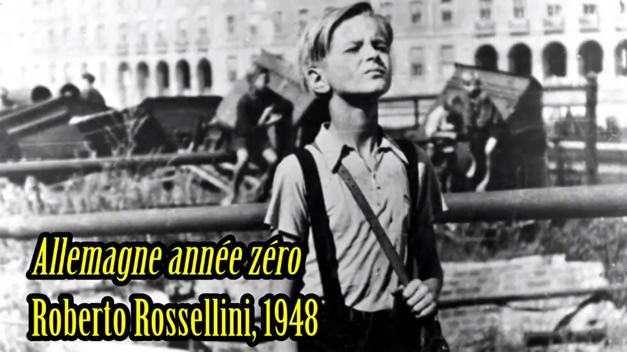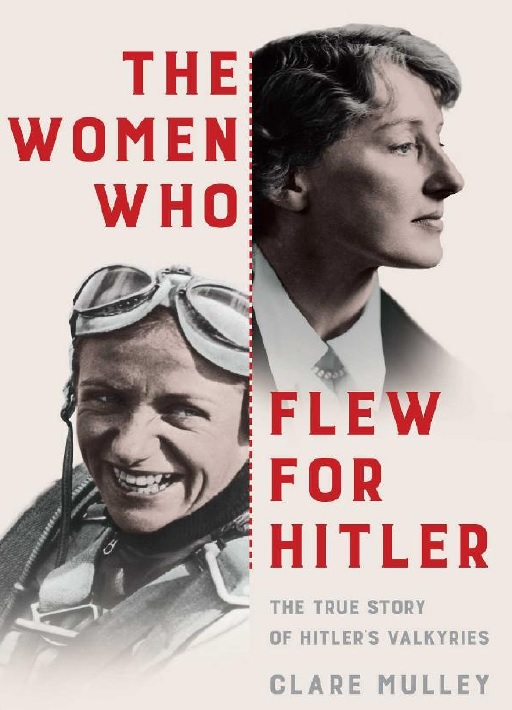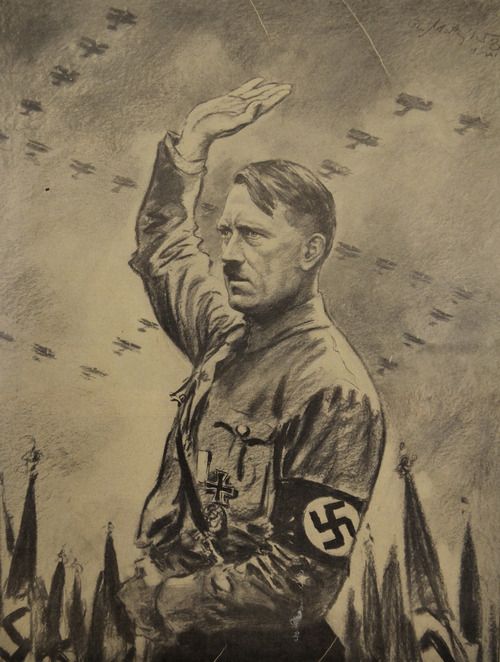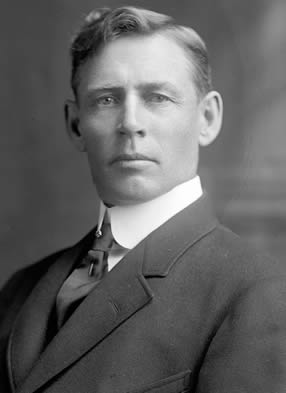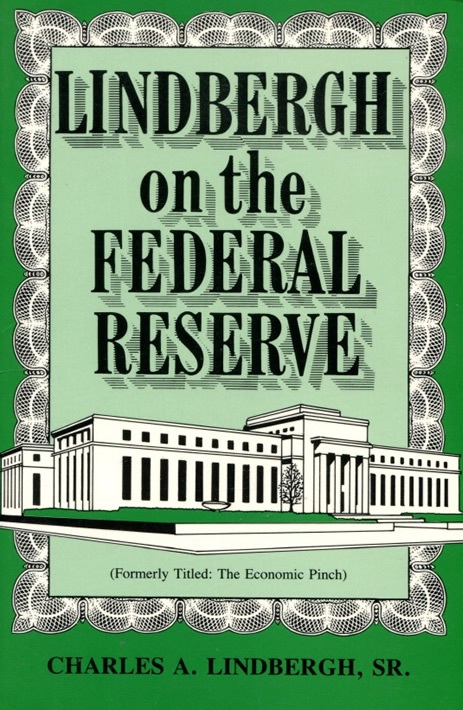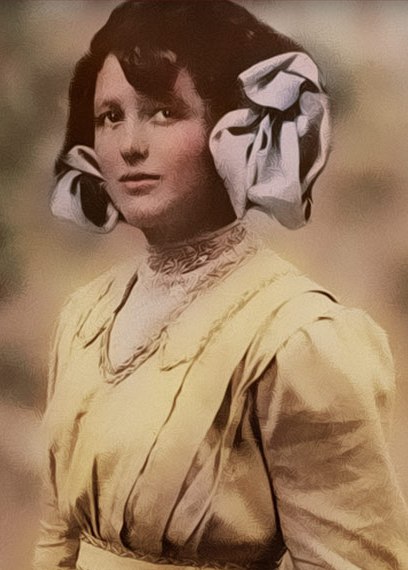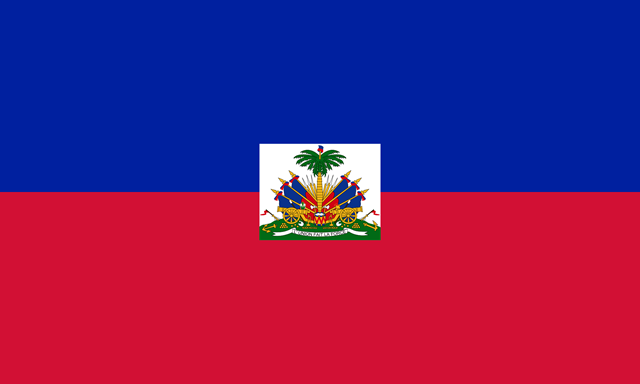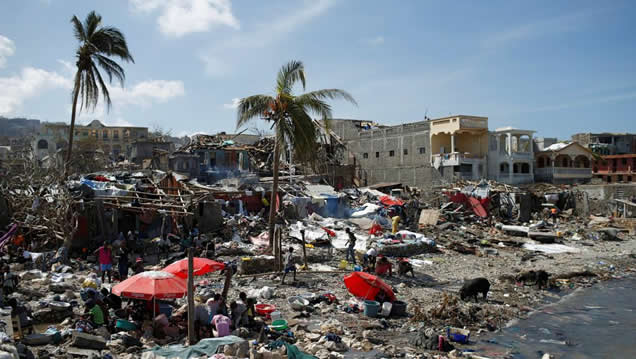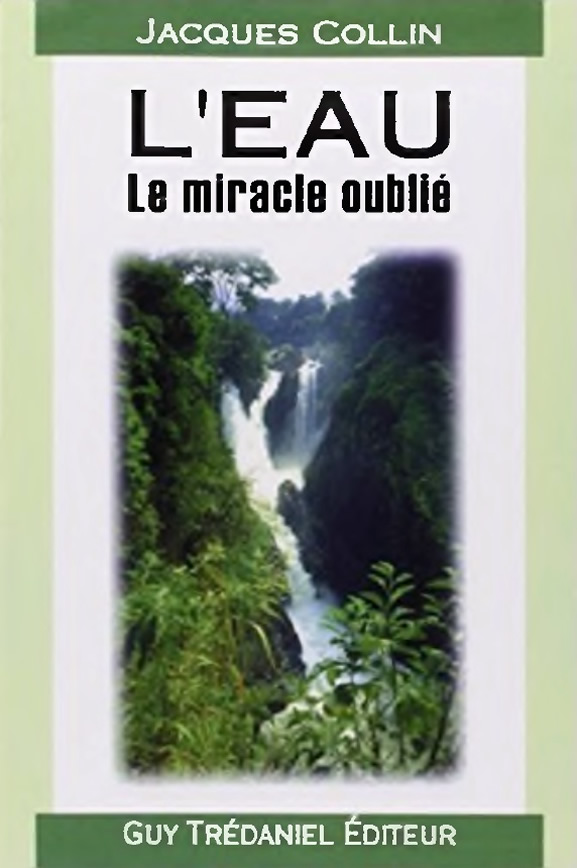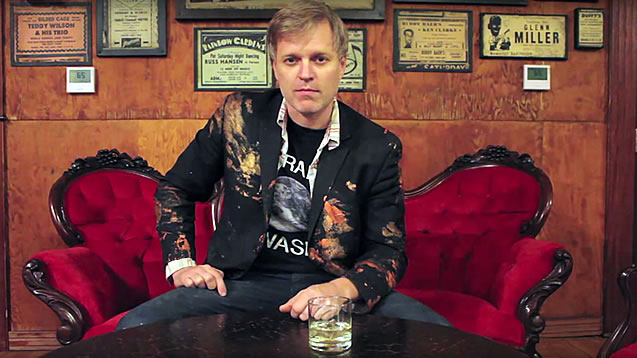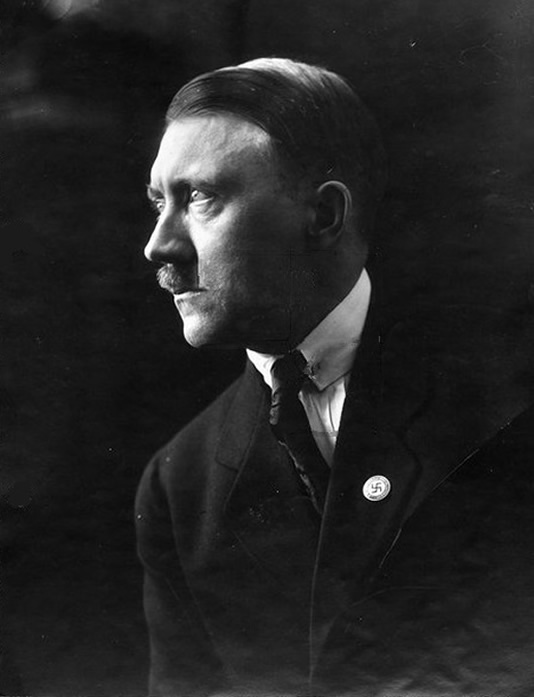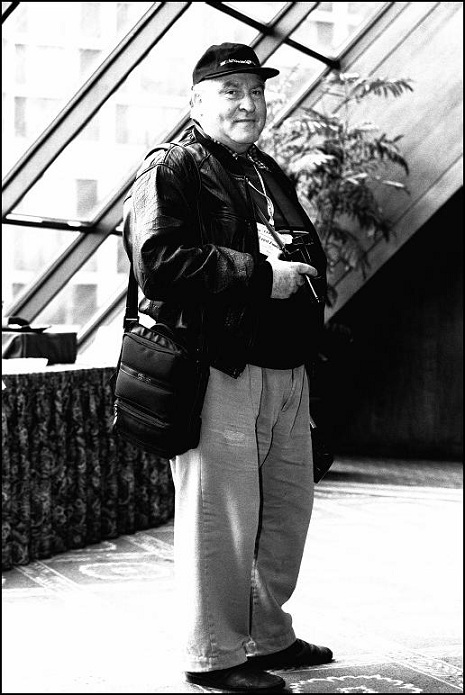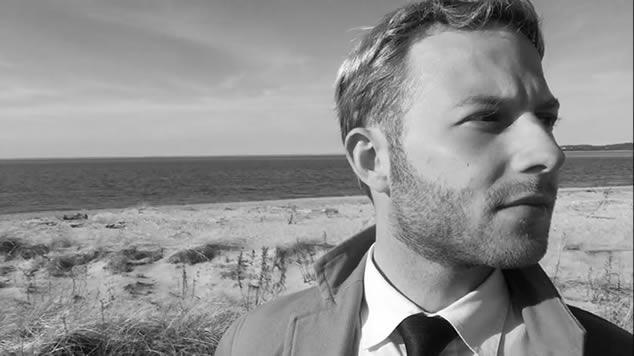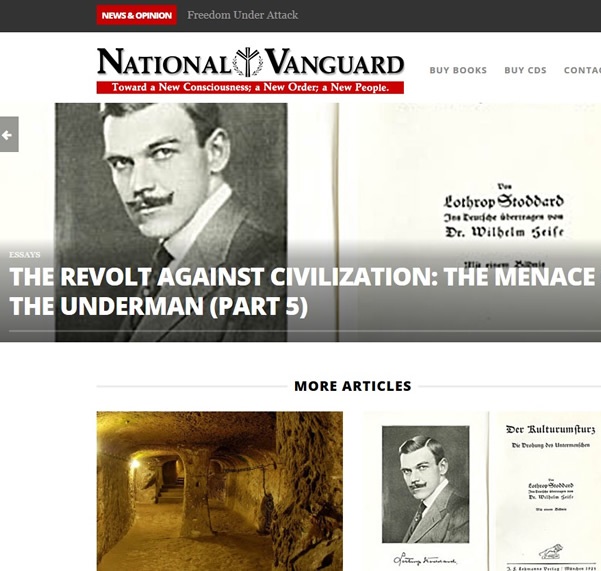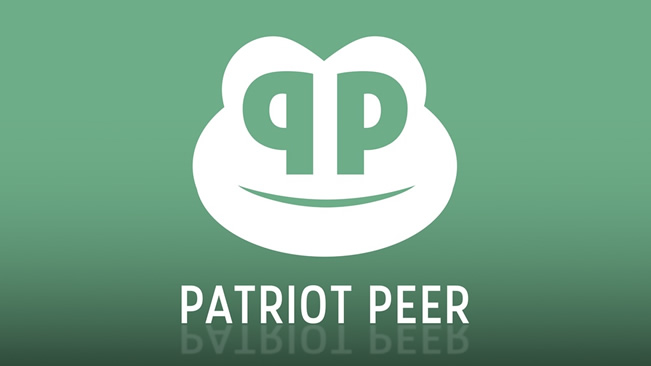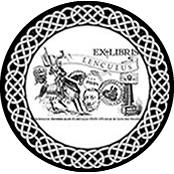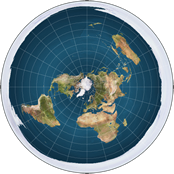Friday 25 August 2017
William Luther Pierce - The Genocide at Vinnitsa
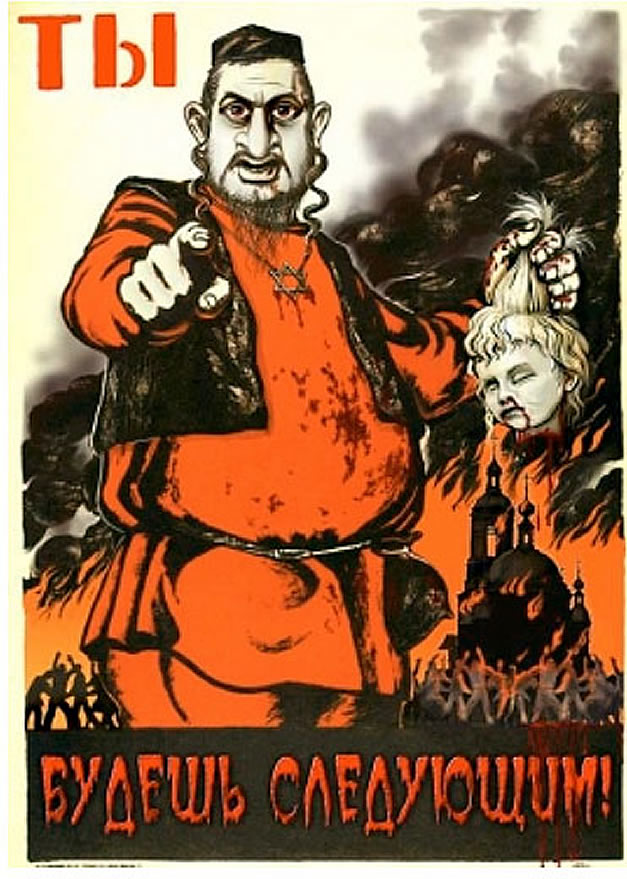
William Luther Pierce - The Genocide at Vinnitsa
Ukraine - 1938
We spoke a few weeks ago about the mass murder of the leadership stratum of the Polish nation by the Soviet secret police in the Katyn Forest in April 1940. We discussed that genocidal atrocity in the light of the ongoing Jewish campaign to portray Jews as the principal victims of the Second World War and to collect reparations from the rest of the world today. A good deal of interest in that broadcast was expressed by listeners, many of whom had not been acquainted previously with the facts of the Katyn atrocity. Today I will explore this general subject further. I will tell you about the fate of the Ukrainian nation at the hands of the Soviet secret police.
In 1943 Germany was at war against the Soviet Union. Twenty-five years earlier, at the end of the First World War, when communist revolutionaries were attempting to take over Germany, Adolf Hitler had sworn to devote his life to fighting communism. He was only a corporal at the time, recuperating from his war wounds in a military hospital, but 15 years later, in 1933, he became chancellor of Germany, and in 1941 his army invaded the Soviet Union with the aim of destroying Soviet communism. The German Army pushed far into the Soviet empire and liberated all of Ukraine from the communists.
In May 1943 units of the German Army were stationed in the Ukrainian city of Vinnitsa, a community of 100,000 persons in a primarily agricultural district. Ukrainian officials in Vinnitsa told the Germans that five years earlier the NKVD - the Soviet secret police, very similar to our FBI - had buried the bodies of a number of executed political prisoners in a city park. The Germans investigated, and within a month they had dug up 9439 corpses from a number of mass graves in the park and a nearby orchard.
Unlike the Poles murdered in the Katyn Forest, all of these bodies found at Vinnitsa were those of civilians, most of them Ukrainian farmers or workers. The bodies of the men all had their hands tied behind their backs, like the Polish officers at Katyn. Although the men's bodies were clothed, the bodies of a number of young women were naked. All of the victims had been shot in the back of the neck with a .22 caliber pistol, the trademark of the NKVD executioners.
The Germans called in an international team of forensic pathologists to examine the bodies and the mass graves. The international team, which included pathologists from Belgium, France, Netherlands, and Sweden, as well as from several countries allied with Germany, examined 95 mass graves and conducted a number of autopsies.
Including the autopsies already performed by Ukrainian medical personnel in Vinnitsa, 1670 of the corpses were examined in detail. The identities of 679 of them were established either through documents found in their clothes or through recognition by relatives, who flocked to Vinnitsa from the surrounding countryside when they heard that the graves had been uncovered.
The authorities estimated that in addition to the 9439 bodies exhumed, there were another 3,000 still in unopened mass graves in the same area. The international team concluded that all of the victims had been killed about five years earlier - that is, in 1938. Relatives of the victims who were identified all testified that the victims had been arrested by the NKVD in 1937 and 1938. The relatives had been told that those arrested were "enemies of the people" and would be sent to Siberia for 10 years. None of the relatives had any idea what the reason was for the arrests and testified that those arrested had committed no crimes and were engaged in no political activity. As I said earlier, nearly all of the victims were farmers or workers, although there were a few priests and civil servants among them. By interviewing a large number of people who had some knowledge of what had happened in Vinnitsa and the surrounding region in 1938, the Germans were able to piece together the following picture. In 1937 and 1938 gangs of the NKVD's jackbooted thugs roamed the villages and towns of Ukraine, arresting people in a pattern that seemed almost random to observers. One victim's wife reported that as the NKVD goons dragged her husband away they said only, "Hey, you dog! You've lived too long." Other observers thought they saw a pattern. A Ukrainian who was renting a part of his house to a Jewish lawyer refused to sell the whole house to the Jew when he offered to buy it at an unreasonably low price. A few weeks later the Ukrainian homeowner was arrested by the NKVD. Another Ukrainian who had threatened to beat up a minor communist functionary who made a crude pass at his sister was arrested shortly thereafter. It seemed that many of the arrests were the settling of personal scores and that anyone who had crossed a Jew was especially likely to be arrested.
All of this was nothing new for Ukrainians. They had borne the brunt of the communization the Soviet Union for nearly two decades. Ukraine was primarily an agricultural nation, a nation of farmers and villagers, and as such was regarded with suspicion by the Jews and the urban rabble who filled the ranks of the Communist Party. The communists championed the urban workers, but they wasted no love on farmers and villagers, who tended to be too independent and self-sufficient for communist tastes.
During the civil war which followed the Bolshevik Revolution of 1917, the Ukrainians wanted to opt out. Ukrainian nationalists wanted no part of the Soviet Union. In 1921 and 1922 the Red Army occupied Vinnitsa, and Ukrainians were butchered wholesale by the Reds in order to kill the Ukrainian nationalist spirit. The craving for Ukrainian independence nevertheless kept flaring up, and further massacres followed, notably in 1928.
Ukraine was the stronghold of the kulaks, the independent farmers and small landowners, always regarded with special hatred by the communist bosses. Stalin gave the job of exterminating the kulaks to his right-hand man in the Kremlin, Lazar Moiseivich Kaganovich, known later as the "Butcher of Ukraine." Kaganovich, the most powerful Jew in the Soviet Union, supervised the collectivization of Ukrainian farms, beginning in 1929. To break the spirit of the kulaks, the Ukraine was subjected to an artificial famine. The NKVD and Red Army troops went from farm to farm, confiscating crops and livestock. The farmers were told that the food was needed for the workers in the cities. None was left for the farmers. And in 1933 and 1934 seven million Ukrainians died of starvation, while Kaganovich watched and gloated from the Kremlin.
Perhaps in 1937 and 1938 the bosses in the Kremlin simply thought that it was time to apply the lash to the Ukrainians again. In any event, the NKVD was given the task this time. The NKVD was even more Jewish than the rest of the Soviet communist apparatus. The commissar of the NKVD until September 1936 had been the Jew Genrikh Yagoda, and he had staffed his instrument of terror and repression with Jews at every level. And those who were not Jews were the worst sort of Russian and Ukrainian rabble, the resentful louts and ne'er-dowells who saw in communism a way to get even with their betters. In any event, the Ukrainians were fully aware of the preponderance of Jews in the secret police, and they suspected that there was a Jewish angle to the pattern of arrests in 1937 and 1938. And indeed, it did seem as if the Talmudic injunction to "kill the best of the Gentiles" was being followed, for those who were arrested seemed to be the most solid, the steadiest, the most reliable and irreproachable of the Ukrainians.
Thirty thousand were arrested in the Vinnitsa region alone, and most of these eventually were sent to the NKVD prison in the city of Vinnitsa. This prison had a normal capacity of 2,000 prisoners, but during 1937 and 1938 it was packed most of the time with more than 18,000 prisoners. Throughout much of 1938 a few dozen prisoners were taken from the prison each night and driven to a nearby NKVD motor pool area. There their hands were tied behind their backs and they were led, one at a time, a few hundred feet to a concrete slab in front of a garage. The slab was used for washing vehicles, and it had a drain at one side with an iron grating over it. Just as the prisoners reached the edge of the slab they were shot in the back of the neck, so that when they fell onto the concrete their blood would run into the drain. This was what the NKVD men jokingly called "mokrii rabota" - "wet work" - and they had had plenty of experience at "wet work." A truck parked next to the slab kept its engine racing so that the noise of the engine would cover the sound of the shots. While the next prisoner was being led up, a couple of NKVD men would throw the corpse of the previous prisoner into the truck. When the night's quota of victims had been murdered the truck would drive off with its load of corpses to the fenced-in park or to the nearby orchard, where new graves already were waiting. And this "wet work" went on night after night, month after month.
So why is this gruesome story important to us now? After all, this massacre of Ukrainians in Vinnitsa took place 60 years ago. I'll tell you why it's still important to us, aside from the fact that these Ukrainians were our people, our kinfolk, part of our race.
First, you might ask yourself why you have never before heard about Vinnitsa, and I'm sure that's the case for about 99 per cent of our listeners. Of course, Alexander Solzhenitsyn wrote about what happened at Vinnitsa, in the third volume of his Gulag Archipelago, but you're not likely to find that in the rack at the checkout counter. And Ukrainians and Germans have written about it, although for the most part their writings have never been published in English, because publishers in this country understand that it would be Politically Incorrect to publish anything about Vinnitsa. Much better that people just forget about it.
Isn't that odd, though, when we continually hear so much about Auschwitz? Isn't it odd that when Jewish groups are using their political influence to have laws passed in a number of states requiring high school students to take courses about the so-called "Holocaust," what happened at Katyn or at Vinnitsa is never mentioned in high school? The excuse given for requiring students to study the so-called "Holocaust" is that it was the greatest crime in history, and we should know about it so that we won't repeat it. But then why shouldn't we learn about Katyn and Vinnitsa and Dresden and a thousand other atrocities where our people were the victims, and so the lesson should be even more pertinent for us ?
You know, I'm not trying to be cute about this. We all know the answers to these questions, but I just want you to think about their significance. To them, Auschwitz is important because Jews died there, and Vinnitsa is not important, because only Gentiles were killed there. The Jewish media bosses keep rubbing our noses in Auschwitz, because they want us to feel guilty; they want us to feel that we owe the Jews something for letting it happen. The Jewish media bosses never mention Vinnitsa because Jews were the guilty ones there.
Besides, they make a lot of money by promoting the "Holocaust." It's certainly not going to help their profits to divide the attention and the sympathy of the American public between Auschwitz and Vinnitsa. And it's certainly not going to help their effort to extort billions of dollars in "Holocaust" reparations from the Swiss and from everyone else to admit their own guilt at Katyn and Vinnitsa.
Think about it! If Poles controlled the news and entertainment media in America, we'd hear a great deal more about Katyn, I suspect. If Germans controlled our media we'd hear much more about the terror bombing of Dresden. And if Ukrainians controlled our media, every high school student would know about Vinnitsa. But it's the Jews who control our media, and so all we hear about is Auschwitz: never even a whisper about Vinnitsa. That's important. We ought to be concerned about that. We ought to be concerned whenever any part of our history is suppressed, is hidden from us. We ought to find out why. It might help us to make sure that what happened to us at Vinnitsa never happens to us again.
I'm sure that you've all heard the maxim that the best defense is a strong offense. Do you remember the persecution all through the 1980s of John Demjanjuk, the retired Cleveland auto worker whom the Jews accused of being "Ivan the Terrible"?
John Demjanjuk is a Ukrainian who came to America after the Second World War. In 1978 the Jews made a big hullabaloo about Demjanjuk being a guard in a German prison camp during the war, and the U.S. government obediently hauled him to court and stripped him of his citizenship. Then he was handed over to the Jews for crucifixion and deported to Israel. The mass media in America were full of sensational stories for 15 years about Ivan the Terrible and how the Ukrainians had helped the Germans persecute the poor, innocent Jews.
Unfortunately, this strategy worked for the Jews. The Ukrainians kept their heads down instead of raising the issue of Vinnitsa. Of course, even if they had begun trying to tell Americans about Vinnitsa or about what Kaganovich had done to the Ukrainian kulaks, who would have heard them? Ukrainians don't own the New York Times, the Washington Post, the Wall Street Journal, Time magazine, Newsweek magazine, or U.S. News & World Report. The Jews own all of those media. And the Ukrainians don't own Hollywood, so they can't make movie dramas about Vinnitsa either, like Steven Spielberg does about the so-called "Holocaust."
The crux of this matter is that the Jews have been getting away with presenting a grossly distorted version of history to us, a version in which they are the completely innocent victims, and our people - the Ukrainians and Poles and Germans - are the bad guys who have been persecuting the poor Jews for no reason at all. They've been pumping out this propaganda in concert, consciously and deliberately, without a single major medium under their control deviating from their party line. And because they've been getting away with giving us a falsified version of history, they've been able to change America's foreign and domestic policies in directions to suit themselves, to our enormous disadvantage.
Everything which has happened in the Middle East, for example, since the Second World War is based on this false history.
More than that, everything that has happened in Europe since the murder of 12,000 Ukrainians at Vinnitsa in 1938 has been based on the Jews' power to control what we learn about our history, about what is happening and has happened in the world around us. The U.S. government allied itself with the Soviet government in 1941 for the purpose of destroying Germany. The communists were presented to the American public as the good guys, as worthy allies, and the Germans were presented as the bad guys. And the American public bought that lie because they didn't know about Vinnitsa or about a thousand other atrocities committed against our people by the communists. When the Germans brought in the international commission to examine the graves in Vinnitsa in 1943, the Jewcontrolled media kept the news from the American people, just the way they kept the news about the Katyn Forest genocide away from the American people. And because of this, there was no real opposition to turning half of Europe over to the communists at the end of the Second World War.
If Katyn and Vinnitsa had been publicized, so that every American voter knew in detail what the NKVD had done at Katyn and at Vinnitsa, the politicians in Washington never would have been able to get away with turning the Poles and the Hungarians and the Rumanians and the Bulgarians and the Croats and the Serbs and the Czechs and the Slovaks and the Baltic peoples and all of the Germans in the eastern part of Germany over to these communist butchers. The politicians in Washington got away with this not just because they were in the pockets of the Jews, but because the American people weren't given the truth. And because we weren't given the truth millions more of our people died at the hands of the NKVD after the war, and all of eastern Europe was plundered by the communists for 50 years, and there was a Korean War and a Vietnam War - which there wouldn't have been if we hadn't kept the communist empire alive because of our own ignorance, because of the lies we'd been told about what happened in Europe. We lost more than 100,000 of our best young men in the Korean and Vietnam wars alone. So you see, it is important what the public is told. It is important that our people know the truth about our history, even about things which happened 60 years ago. And I intend to do everything I can to give them the truth.
Now I believe that you can understand why the Jews try so hard to keep me off the air, why they bring pressure against every radio station which carries American Dissident Voices. They are desperate to keep the American people in the dark about Vinnitsa and Katyn and their other crimes. And I am determined to tear down the curtain of silence and darkness and give truth and light to our people.
And there is some urgency about this, because the Jews are continuing to push for laws against what they call "hate speech" - which means any speech which contradicts their lies. They have succeeded in getting such laws passed in other countries. If I tried to make this broadcast in Canada or Britain, for example, the police would arrest me and shut down the station before I could finish. Let's not let that happen in America.
The preceding text is based on the American Dissident Voices broadcast of June 13, 1998.
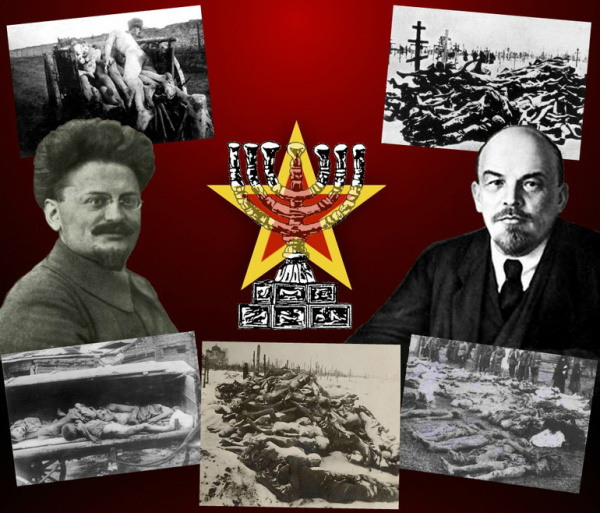
Vinnytsia - The Katyn Of Ukraine
A Report by an Eyewitness
by M. Seleshko
Toward the end of February, 1944, when I was marking time in a German prison in Potsdam, I was transferred to cell number 20, already occupied by several other prisoners. After a brief acquaintance I learned that one of these was a Ukrainian from the vicinity of Vinnytsia. We came to know each other closely and he told me his life history. At that time he was twenty-three years of age, born and bred in Soviet Ukraine. He had been educated by the Communist party and had been a Communist in the full meaning of the word. Communist ideals were his ideals. He fought on the German/Soviet front. After his capture by the Germans, he was forced into anti-aircraft artillery work for the Germans in Berlin. Because of negligence in line of duty he was thrown into jail. There our paths met.
I kept asking him questions about life under the Soviets. He formerly belonged to a civilian border patrol unit. Being a Comsomol, he took his duties seriously and helped track down many foreign intelligence agents who were trying to slip across the border into the Soviet Union. There were others, young Soviet patriots like himself, in the villages and districts.
He told me of the steps taken by the Soviets in Ukraine as a preparation for war. In the Communist party at least as early as 1937 it was felt that war against Germany was imminent. Confidential instructions to members of the party and the Comsomol stressed this eventuality. These instructions ordered that the Soviet hinterland in Ukraine be purged of enemies of the people. By the words “enemies of the people” were meant not only all those people who worked actively against the Soviet regime, but also those who were believed to be inclined to hostility toward the government including those whose complete devotion to the regime had not been clearly manifested.
A purge of enemies of the population of the Soviet border regions was commenced. Herein lies the story of the Ukrainian tragedy in Vinnytsia, which was revealed to the world in 1943. (Vinnytsia is a Ukrainian city, which was, prior to 1939, approximately 100 miles from the eastern border of Poland.)
My young companion is now a Ukrainian patriot, and much about him must not be made public. Everything he said supplemented my own knowledge of the Vinnytsia tragedy and helped to complete the picture I had formed of it during my experiences in Vinnytsia.
In the summer of 1943 I was living in Berlin under the close supervision of the Gestapo as a suspected foreigner, an unreliable alien and a Polish citizen. On July 2, 1943, during the noon hour, I was called to the telephone by what the Germans called the Ukrainian Confidence Service. This was a German government agency which registered all Ukrainians in Germany and tried to win their support for German purposes among the Ukrainians.
The chief of this agency informed me that in the near future a special committee for the investigation of mass murders in Ukraine would depart to do its work on the spot. He also told me that I had been appointed interpreter for this committee because of my knowledge of German, Ukrainian, Russian, and Polish, and in addition because I knew how to type in both German and Ukrainian. He suggested that I accept this position voluntarily and at the same time emphasized that, should I refuse, I would be drafted for it on the basis of a certain mobilization regulation.
I had no choice. I asked for several hours to consider the proposal. I immediately got in touch with my friends, among them Dr. Oleh Kandyba-Olzhych, the Ukrainian poet, who was living illegally at that time in Berlin. We agreed that it would be best for me to go with the commission, even though its destination was not known. And I had not asked, for in Germany during the war it did not pay to be overly inquisitive.
After two hours I called the confidence service and announced my willingness to accompany the commission as a translator-interpreter, I was instructed to await further instructions via telephone. About 5 p.m. of the same day the headquarters of the criminal police telephoned. I was ordered to appear at their address and to report to an official named Denerlein. I went.
Denerlein, a friendly man of rather advanced age, immediately introduced me to several officials in his department, and said that we would depart for Ukraine immediately. After brief interviews I was given appropriate military travelling documents and allowed to return home.
The criminal police department was swarming with uniformed police, some of them wearing an arm-band marked SD, which meant that these officials were from the special political section Sicherheitsdienst. By piecing together various bits of conversation I deduced that our group was going to the front lines. Among the members of the commission were Raeder, Krupke, and Groner, all three commissars of the criminal police. State-councilor Klass, the chairman of the commission, was already at the place where the commission was supposed to function.
We set out July 4, 1943, by way of Warsaw, Lublin, Kovel and Shepetivka. Before our departure I was given a pistol as a preparation for any eventuality. We were unmolested in Warsaw, although at that time the battle in the Jewish ghetto was going on but beyond that city our route was through a region controlled by Ukrainian insurgents (UPA).
Immediately outside of Warsaw we passed long trains that had been blown up. In the town of Kovel in the Ukrainian province of Volyn we had to transfer to another train. Precautionary measures for defense against partisans were taken and, ridiculously enough, I was ordered to hold my pistol in my hand in ready position for firing against the machine-guns and mines of the guerillas. We were not attacked, however, for the insurgents shot up with machine guns the dummy tank train that had been purposely sent ahead of us and we experienced nothing beyond fear. At the railway station in Shepetivka, however, we met action on a somewhat broader scale. After our train, loaded with German soldiers, pulled in at the railway station, the Ukrainians destroyed all of the four rail lines leading into Shepetivka and we could not continue the journey. We managed to reach Vinnytsia without any losses, around 11 o’clock at night. We were driven in police automobiles to No. 5 Mazepa street. Under the Bolsheviks this had been named Dzherzhinsky street and the building had housed the regional headquarters of the NKVD.
Excavations in Vinnytsia
In Vinnytsia I was informed about the purpose of the commission by one of its members, a photographer, who arrived in the city at some earlier date. With the aid of the civilian population mass graves had been discovered, in which thousands of corpses had been buried. These graves were to be opened and the commission was to establish whom the NKVD had murdered. The commission lived and worked in the former headquarters of the NKVD, the place from which the mass-murder was directed. It included among its members German specialists in criminal investigation.
The exhumations in Vinnytsia began on May 25, 1943, and were carried on in three places. The population was of the opinion that there were around 20,000 victims in the war years. In addition to our commission two other bodies – a legal and medical commission – took part in the investigations.
Our committee unpacked its equipment, set up its office and on July 7, after lunch set out in automobiles for the scene of the exhumations – a garden along the Lityn highway, which leads from Vinnytsia to Lviv by way of Lityn.
From the conversation of the police, who were housed in the same barrack that we were, I had gained a more or less adequate picture of what had taken place. The first sight of the corpses horrified me, as did the stench that came from them. It was a hot summer day and it was necessary to steel one’s nerves in order to live through the horrible experience. I had been a soldier in the Ukrainian army during the First World War and had seen many men killed in battle, but what I had then seen can in no way be compared with what I witnessed in that park.
A huge mass of people were milling among the trees in the garden. Everything was permeated with the heat of summer and the horrible stench of corpses. Here and there workers were digging up the earth. From it with the use of ropes they pulled out human corpses, some of them whole, others in pieces. They laid them carefully out on the grass. At first it seemed to me that there were thousands of them, but later I counted them and there were but 700 lying on the grass. Everybody present had a serious expression. The local inhabitants examined the exhumed corpses, and scrutinized the remnants of clothing. From the graves workers threw out bits of cloth and placed them in separate piles. The wet clothes were spread on the grass to dry. The dry clothes were searched for papers and other belongings. Everything was taken out, and registered; the documents found were read, when possible, and recorded; those not legible were preserved. Now and then for one group or another burst out the agonizing, hysterical cry of a woman, or the groan of a man, which resembled the terror of death. A woman recognized the clothes of her loved ones, or a man those of a member of his family. All of them, it was later ascertained, had been sure that their relative were somewhere in exile in Siberia, perhaps, or in the Far East, in the North, somewhere. Now they leaned how the Soviet government had fooled them, for their loved ones lay in Ukrainian soil, in Vinnytsia, murdered by the NKVD. The government had met all questions with the reply that all in exile were deprived of the right of communicating with their families.
After the first shock had lessened, and I had become accustomed to the sweet, unpleasant stench, I took a greater interest in the investigations. The digging was done by common criminals from the local prison under the guard of German police. Alcohol was frequently given to the workers so that they might be able to stand the stench. Men and women, clothed and unclothed, were dug up. Men with their hands tied behind their backs. Here and there heads that had been beaten in; sometimes the nape showed signs of bullet-wounds. Black corpses, mummified corpses, corpses yellow-black with cadaverous wax. They had been in the earth a long time, for the most part deformed by the pressure of the soil above. Member of the commission, old criminologists who had seen many a crime, affirmed that never before had they seen anything so ghastly. In an area close to the graves doctors made immediate autopsies and tried to ascertain the cause of death. The horror of Vinnytsia I shall never forget and it is doubtful whether ever a Dante would be able to portray the agony that had taken place.
Our next point was the Gorky Park of Culture and Rest, named in honor of the Russian poet. Here the scene was no better than the previous one. A lesser number of corpses was unearthed, for the most of the digging was done in the garden along the highway. The bodies of mothers, fathers, sisters, and brothers had been buried under the earth and over it a board had been placed for the young people to dance and amuse themselves, unaware that their relatives’ corpses were lying underneath! The names of those Communists responsible for such diabolical measures are known and it is hoped that their evil memory will not pass into history forgotten.
The picture was the same in the graveyard opposite the park. Beside the regular graves as well as under the stones of the original graves were found mass-victims of the NKVD.
The Commission at work
The committee worked industriously. Witnesses of the horrible tragedy were questioned, the place of the criminal executions determined, and the time as well. Documents found either alone or on the corpses were analyzed, nothing was overlooked; German thoroughness, often approaching absurdity, as it seemed to me, was employed. I was not acquainted with the techniques of criminologists, the clues they put together in order to arrive at the facts, and often what to me appeared beyond dispute they accepted with reservations and searched for unimpeachable evidence. The hours of work were from 10 to 16 each day. I was used as an interpreter between the local inhabitants and the German specialists. Thousands of people volunteered to act as witnesses for the commission. They volunteered in spite of the fact that Bolshevik agents made many threats of revenge, and insisted that the Germans had killed these people and were now seeking to place the blame on the NKVD. This twist interested me and I paid special attention in order to ascertain its veracity. Insofar as I am concerned there is no doubt that the unearthed corpses in Vinnytsia were the first victims of the Bolsheviks, murdered in what was in fact a preparation for war.
I cannot describe the entire work of the commission, all that it ascertained and concluded. I imagine that its findings have been recorded in detail and are available somewhere. As a Ukrainian in civilian attire it was easy for me to get around, for I felt that I was at home, on native Ukrainian soil. The Germans, of course, did not enjoy such a confidence in Vinnytsia, for they had come as conquerors. A complete history of the entire tragedy will one day be written by historians. I was forbidden from doing anything on my own and was able to maintain official contact with my friends only through the German military post office, which was scrutinized by the Gestapo. I made no personal notes. Instead, another opportunity presented itself: through the kindness of one of the members of the commission I was able to send personal letters to Ukrainian friends in Berlin. He gave the letters to a pilot assigned to regular duty between Berlin and Vinnytsia. I recorded as much as I could in the from of private letters, and the material arrived in the hands of my friends without accident. On the basis of these letters I am able to reveal the impression I had of the tragedy in Vinnytsia.
Some special incidents of the tragedy in Vinnytsia
A few incidents will illustrate the tragedy.
The wife of a priest named Biletsky from the vicinity of Vinnytsia recognized the garments of her husband lying on a mound. She cleaned the garment and a patch was revealed. As proof that she spoke the truth she departed for her village, and returned to the commission a few days later with other bits of the material used for patching. The committee examined the material and agreed that the patch on the priest’s coat came from the same material. This was proof that her husband had been shot and buried in Vinnytsia, but the NKVD had informed her that her husband was in exile without the right of communicating with his family.
Hanna Hodovanets, a Ukrainian peasant woman, recognized her husband’s coat as they unearthed it from a mass-grave. She told the police about her husband’s arrest. He had been arrested because he had not reported at work on a certain holiday. She had done everything possible to find out what had happened to him, and one day in 1938 she received a card from Moscow, from the procurator’s office and signed by none other than Audrey Vyshinsky, with the news that her husband had been freed from prison in March, 1938. However, her husband had never returned home and she felt that something was wrong. Her feelings became a sad reality when she recognized her husband’s coat.
Another Ukrainian woman, Olkhivska by name, sat for hours on the hills of dirt as the corpses were lifted from the graves. At one grave she gave vent to cries of anguish. She had just recognized her husband, who had been arrested by the NKVD, by a broken small finger as well as by his clothes. And she too told a story that ended in a mass-grave.
There were similar examples by the hundreds, while thousands of others found no clues whereby they might identify their loved ones. I talked with them, recorded their tragedies, shared their suffering. The commission studied the methods of Soviet interrogation and trial, torture and execution, prison and exile. It interviewed thousands of witnesses, went through a mass of varied documents, and examined the belongings of witnesses.
The following incident suggests that justice may yet triumph in this world. A note was found in the coat of the exhumed corpse of a heroic Christian. It was wet, as was the corpse, but was carefully dried. Then I set to work to decipher it. With the aid of several local Ukrainians we put together the story. The paper was of ordinary stock, white in color, used on local school tablets. In crude handwriting was penciled: “I … beg the person that finds this note to pass on to my wife, Zina … from the village … region of … that I was denounced to the NKVD by the following …” And here were the names and addresses of seven persons. The note continued: “They bore witness against me before the NKVD and spoke falsehoods. I have been sentenced to death and in a short time will be shot. God knows that I am innocent. Let God forgive their transgression; I have forgiven them.”
We refused to believe what we had read. To expect such magnanimity from a simple peasant in the moment of death was too much to believe. But the fact stirred everybody. We informed those in charge of the investigation, and later it was found that it was all true. Two of the persons named in the note had died in the meantime, two were officers in the Red Army, and three were available in the neighborhood, peacefully going about their business, since no one knew that they were secret assistants of the NKVD. During my presences in Vinnytsia they were not arrested. The Germans, however, recorded all the secret helpers of the NKVD. Some of them managed to obtain administrative posts during the occupation, and often announced themselves as of German origin. The Germans were aware of this manoeuver and were preparing a surprise move called “lightning-action,” blitzaktion. I was later informed that this “lightning action” had been executed before the Germans abandoned Vinnytsia.
Hulevych, Skrepek, and many other Ukrainians testified how the NKVD transported the corpses to the burial points. They stated that the bodies were transported from NKVD headquarters at No. 5 Dzherzhinsky street, that at night they saw and heard the trucks in action and that in the morning on their way to work they saw the blood that had dripped from the trucks and that they saw NKVD underlings covering up the signs of their work at the site of the mass graves. There were also witnesses who testified that from trees they observed what was happening behind the high walls of the NKVD compound and that graves were dug and corpses buried. It was a fact well circulated in the city that two Ukrainians, who had dared to peer through the board fence despite the prohibition, had disappeared never to be seen again. It was also common talk that a boy, who had tried to climb the fence in order to steal some apples, disappeared without a trace after the NKVD guards caught him in the act.
How the NKVD operates
I talked with those people in Vinnytsia who first divulged the information about the mass murders, on the basis of which excavation was begun by the Germans. The commission found a woman who had worked in the NKVD headquarters for fifteen years. She was superannuated, and not in command of all her mental faculties, but the memory of what had transpired long before she retained as though it had happened yesterday. When the Bolsheviks retired before the German advance, she remained in Vinnytsia by frustrating efforts made by the government to evacuate her. Her revelations, although chronologically vague, were valuable in that they described Soviet methods of investigation and punishment. Former prisoners of the NKVD gave corroborative testimony.
One such former prisoner, named Dashchin, who had been in exile in the Kolyma region, told of an incident in a gold-mining camp. The camp contained 7,000 prisoners from all parts of the Soviet Union, and upon completion of the work there it was evident that the means of transportation to another locality were not available. The prisoners were too weak from malnutrition to go elsewhere on foot, for the nearest work-camp was thousands of kilometers distant. The problem was solved very simply. The prisoners were driven to a cliff that had been mined, and were blown into oblivion. Dashchin was one of the few that miraculously survived the explosion. Somehow he managed to trek across Siberia and return to Ukraine.
The NKVD usually made arrests at night, searching the houses and later writing a protocol on the case. The Commission found very many of these protocols both with the corpses and in a separate grave where only documents were buried. All arrested were accused of being “enemies of the people.” Some had refused to renounce their religion, others had opposed the collectivization of their private property, still others had spoken dangerous words against Communism. Some had been victims of denunciations or revenge others had failed to appear at work during a religious holiday, while many had changed their place of work without the permission of the NKVD. Many witnesses questioned by the committee were unable to explain why their relatives had been arrested. Their inquiries addressed to the NKVD or the judge simply evoked the stereotyped reply, “enemies of the people exiled for a long period of time without the right of communication with their relatives.” Women appealed to Stalin and other leaders of the Soviet state, but the reaction was the same. I saw and read many cards carrying that message. Among the items found in the graves were remnants of priestly garments, religious books, and correspondence of the murdered with the authorities of the state and the police. Items discovered were put on display – photographs, letters, postage stamps, and crosses – and many residents identified their dead relatives by them.
A religious group in the region of Ulaniv deserves special mention. Called the sect of St. Michael, nineteen of its members were arrested by the NKVD and some of them were identified in the graves. They were recognized because it was their custom to wear a white cross sewn to their clothes. Garments with this cross were found in the graves, sometimes alone and at times still about the corpse. Many members of this sect visited the excavations and recognized their co-religionists.
Statistics of the tragedy
From May 1943 to October 1943, 9,432 corpses were found in three places of excavation. There were 91 graves with corpses, and three with only clothes or documents. Forty-nine graves had from one to 100 corpses, 33 from 100 to 200 corpses, and nine from 200 to 284 corpses. One hundred and sixty-nine corpses were of women, 120 of advanced age, according to the findings of the medical commission. Forty-nine women were of young or middle age. The corpses of females of advanced age were clothed, whereas those of the younger years were naked. This seemed to bear out the rumors common among the local population that the young women arrested by the NKVD were subjected to sexual brutalities prior to their execution. One pregnant woman was found who had actually given birth to a child in the grave. Most of the corpses were of people from 30 to 40 years of age. Most had died from bullets from a special gun. Some of the victims had been hit by two bullets, others had but one bullet hole, while still other had received as many as four. Evidences of skull fracture by means of an instrument, apparently the butt of a rifle, was fund in 391 cases. The stronger men had their arms and legs bound. Cases of shooting in the forehead as well as the back of their head were recorded.
Of the total of 9,432 corpses 679 were identified, 468 by their garments, 202 by documents, and 2 by body marks. From the point of view of occupation the identified included 279 peasants, 119 workers, 92 officials, and 189 members of the intelligentsia. Nationally the identified were broken down into 490 Ukrainians, 28 Poles, and 161 uncertain, although the names of the last group suggested almost all the nationalities of the USSR and some from Europe as well.
These basic statistics speak for themselves. Only one place, the garden, was thoroughly examined, for the park and the cemetery were only partially investigated. It is not excluded that many more bodies had been buried in these places. Other localities, which according to the reports of the local population, were also scenes of mass murder by the NKVD were not inspected. It was ascertained that other Ukrainian cities that had been regional and district headquarters of the NKVD had also experienced mass executions. Efforts were made to verify the rumors circulating among the population regarding mass graves. Kiev, Odessa, Zhytomir, Berdychiv, Haisyn, Dnipropertrovsk, Krasnodar in the Kuban region, and other places were supposed to be investigated, but chaotic conditions in Ukraine frustrated such endeavors, It is know, however, very definitely that in Krasnodar, where the Kuban cossacks fought stubbornly against the Bolsheviks in an effort to win independence, the NKVD employed a special machine which ground up the bodies of those shot and oftentimes still living persons as if they were meat and automatically dumped this mass of flesh into the Kuban river. This brutality was affirmed by eyewitnesses who reported various phases of the slaughter.
My companion in the German prison in Potsdam told me that in 1937 instructions were given both to the Communist party and the Comsomol to cleanse the border districts of Ukraine of “enemies of the people.” This purge was carried out. The revelations of this former Comsomol both agreed with and supplemented the findings obtained by the committee of investigation.
Bibliography
Black Deeds of the Kremlin, vol. 1, Toronto, 1953.
Crime of Moscow in Vynnytsia, Scottish League for European Freedom, Edinburgh, 1952, 32 pp., reprinted by IHR, 1980, $3.
Massenord in Winniza (Mass Murder in Vynnytsia), German Government, 1940 ?
The Gulag Archipelago, Vol. 3, Alexander Solzhenitsyn.
History of Ukraine, “America,” Philadelphia, 1975.
Source : Reprinted from The Journal of Historical Review, vol. 1, no. 4, p. 335.
See also :
William Luther Pierce - The truth behind the Katyn forest massacre
Holodomor - The real holocaust VOSTFR
Ukrainian famine research committee - Holodomor
William Luther Pierce - VIDEOS
William Luther Pierce - PDF
Ukraine - PDF
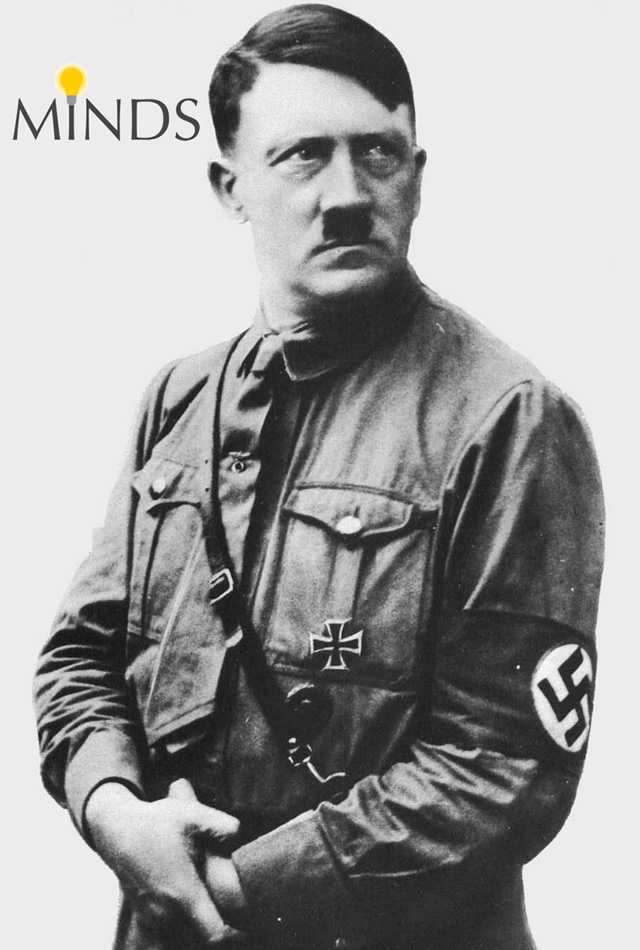
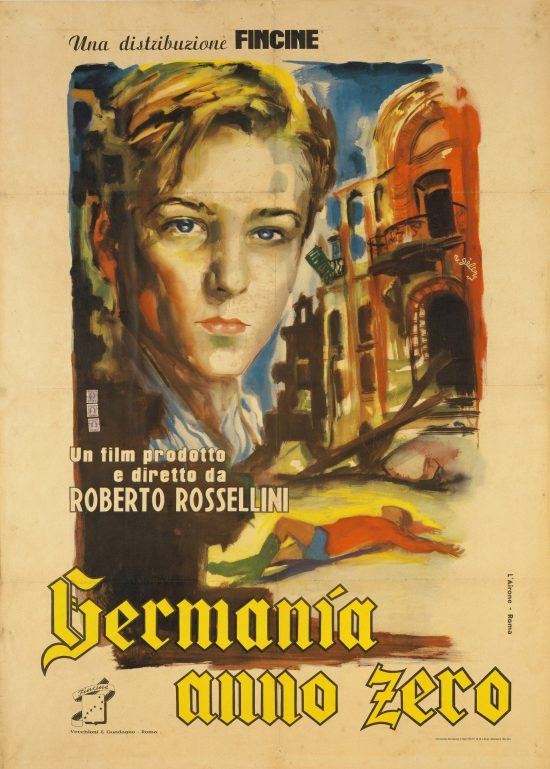
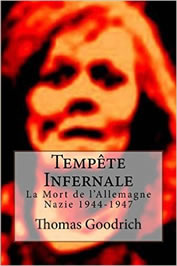 Il n'est pas question dans ce livre de chercher à connaître la véracité, l'exactitude des témoignages rapportés ou de disculper les Allemands de leur présumés crimes. Ce livre ne traite pas des crimes attribués aux vaincus par les vainqueurs, ni ne consacre un "temps égal" à la version alliée de la soi-disant "Bonne guerre". Toute personne à la recherche d'informations traitant du point de vue opposé n'a qu'à se rendre à la bibliothèque locale ou d'allumer sa télévision. Non, ce livre ne porte pas sur ce que les Allemands ont fait au monde, mais il porte sur ce que le monde a fait aux Allemands ; les crimes monstrueux que le monde a commis contre l'Allemagne, pendant et après la guerre, des crimes si horribles et diaboliques qu'il n'y a pas de mots dans la langue française pour les décrire avec précision ; des crimes qui ont été enterrés par les vainqueurs sous une montagne de mensonges et de propagande durant plus de 70 ans. J'ai le sentiment que ce livre est de loin un monument approprié et attendu depuis longtemps, vis-à-vis de ces pauvres âmes misérables, les victimes sans voix de la pire guerre au monde. Thomas Goodrich
Il n'est pas question dans ce livre de chercher à connaître la véracité, l'exactitude des témoignages rapportés ou de disculper les Allemands de leur présumés crimes. Ce livre ne traite pas des crimes attribués aux vaincus par les vainqueurs, ni ne consacre un "temps égal" à la version alliée de la soi-disant "Bonne guerre". Toute personne à la recherche d'informations traitant du point de vue opposé n'a qu'à se rendre à la bibliothèque locale ou d'allumer sa télévision. Non, ce livre ne porte pas sur ce que les Allemands ont fait au monde, mais il porte sur ce que le monde a fait aux Allemands ; les crimes monstrueux que le monde a commis contre l'Allemagne, pendant et après la guerre, des crimes si horribles et diaboliques qu'il n'y a pas de mots dans la langue française pour les décrire avec précision ; des crimes qui ont été enterrés par les vainqueurs sous une montagne de mensonges et de propagande durant plus de 70 ans. J'ai le sentiment que ce livre est de loin un monument approprié et attendu depuis longtemps, vis-à-vis de ces pauvres âmes misérables, les victimes sans voix de la pire guerre au monde. Thomas Goodrich